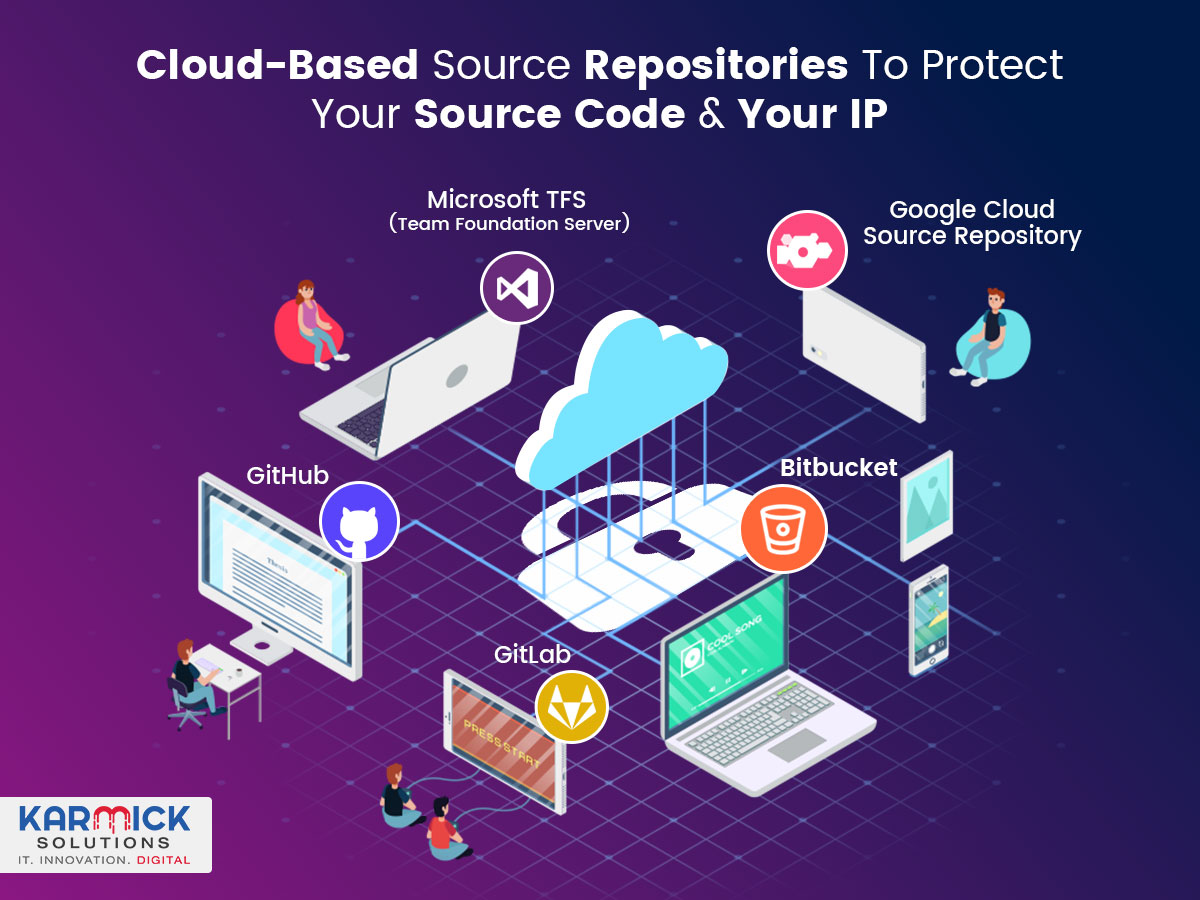
CSR is a repository of source code. Here CSR stands for cloud-based source repository or cloud source repository. You can access and use the source code as per your need with the help of a web interface. Earlier, open-source software projects use such repositories. But several software development companies now use repositories for protecting their source code.
Presently, the top cloud-based source repositories are GitHub, Google Cloud Source Repository, GitLab, Microsoft TFS (Team Foundation Server), and Bitbucket. Some ways in which these repositories safeguard source code are as follows:
Keeping track of every change
Cloud-based source repositories enable its user to keep track of every change by a proper version control system which, in turn, use various version control systems. Some of these are the Microsoft visual studio source control, Git, Helix Core, and so on. For example, in Github– there is a distributed version control system (DVCS). In DVCS, a commit represents each revision in the source code with a cryptographic hash function called SHA-1. Thus, it becomes impossible for anyone to change any data in your source code without your knowledge if it is in the GitHub repository. Another popular source repository based on the cloud platform is Bitbucket which also has a version control system for efficient tracking of changes.
Comprehensive backup of the source code
When there are multiple copies, chances of losing the source code is low. In GitHub, one can use Restic- a useful backup program which demands a robust password for the new back-end. Similarly, Bitbucket also offers secure backup of source code to rule out any possibility of data loss due to a complete breakdown of the system. The cloud-based source repository uses three back up strategies for the same-zero downtime backup, server DIY backup, and server backup client.
Zero possibility of code overlapping
Cloud-based source repositories allow multiple developers or programmers to work on the same project without any possibility of code overlapping. For example in GitHub, whenever a developer makes an edit within the code, with a drag and droppable snapshot, it becomes easy to track code edits. There is also a seamless code review mechanism that eliminates code overlapping. In Gitlab too, there are several features such as file locking, rejection of unsigned commits, blocking of secret file push, and so on to thwart any possibility of overlapping of codes in its enterprise editions-Silver and Gold.
The trend of considering source code as IP
According to Eric Allman-an eminent computer programmer and recipient of Telluride Tech Festival Award of Technology, “The intellectual property situation is bad and getting worse. To be a programmer, it requires that you understand as much law as you do technology.”
A growing number of organizations engaged in software development or application development are now considering their source code as an intellectual property (IP). If they fail to consider their source code as an IP, they will end up having less control over the same. Remember, any kind of software innovation or development is not feasible without source code. So, organizations are today not refraining themselves from treating a software innovation as an IP under various categories that are as follows:
The category is decide based on the specific needs of the organization or company. Many independent software programmers also secure their source code by considering them as an IP. They make use of cloud-based source repositories. As these repositories successfully protect the source-code, needless to say, they also impart necessary protection to your IP.